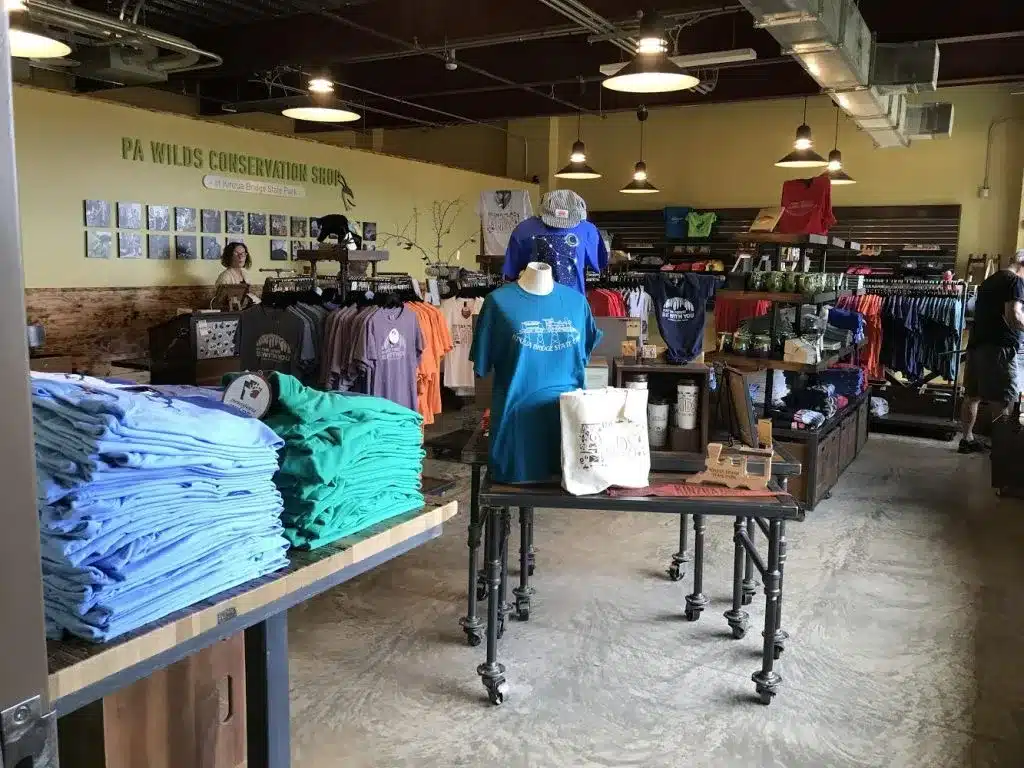Many older rural leaders are looking to support the next generation, and younger rural leaders are cultivating and honing skills and connections to lead their communities toward equitable prosperity. Younger leaders, particularly BIPOC leaders, have too often been excluded from positions of power, intentionally by design or due to a limited understanding of barriers to participation. Communities that diversify their leadership and ensure that leadership structures are accessible to all community members make it more likely that the whole community will engage and share perspectives in planning and doing.
In what ways are younger leaders transforming rural and Indigenous communities? What makes this type of leadership different and important for rural places? How are rural and Indigenous communities identifying and cultivating a diversity of new and existing rural and Indigenous leaders?
To explore these questions, Bonita Robertson-Hardy, Aspen CSG’s Co-Executive Director, facilitated a virtual discussion of 90 rural leaders with all levels of experience. The ideas and most of the resources shared in this blog arose from this wide-ranging conversation that included a networking bulletin board.
Youth Leadership
Evidence shows that a wider range of participation, including from youth leaders and young professionals, builds more durable and inclusive community leadership, ultimately leading to a wider range of community benefits. Participants shared some ideas they are using to support youth leadership:
- Participants offered many examples of community efforts that encourage youth to self-identify priorities. One way suggested is to set up a Youth Advisory Council, and another is to have an “ex-officio” youth member on the city council.
- Inclusive and safe physical spaces are important for youth to feel engaged and develop as a part of the wider community. One participant shared a story of how a community established a local teen center, and another shared how federal programs can help to turn abandoned brownfield sites into community centers.
- Supporting Indigenous youth was another important topic of conversation. One example of an effort is the Zuni Enrichment Youth Program in southwest New Mexico. Another participant shared how the Wilderness Society works hand-in-hand with the Eastern Band of Cherokee Indians to help Indigenous youth learn photography and document their landscape and community.
- Participants discussed how in recent years, rural high schoolers have shown leadership in staging walkouts, protests, and vigils in solidarity with the local LGBTQ+ community. Statewide organizations like the Pride Center of Vermont and Outright Vermont have supported LGBTQ+ affinity spaces.
Partnerships for Youth Success
An insight discussed by multiple participants was that youth organizations and community groups need to work together to prepare adults, especially elected officials and educators, to be ready and willing to listen and support youth leadership. What does it take for a local organization to coach adults and support youth leaders?
- Participants expanded on the tug and pull of working with school systems to promote youth leadership. Schools are generally good spaces to engage and connect with young leaders. But more than one participant noted how national education standards and state curricula do not teach “place-based” education. According to participants, this means that students are not taught about their locality and, more importantly, how to engage, support, develop and thrive within their community.
- Outdoor education can help youth develop a more place-based appreciation for their region. One participant shared an outdoor education program in the Southwest. Another shared the challenges of working to integrate sports and outdoor recreation into their local school system.
- To better support youth, local organizations must develop collaborative relationships with elected officials, youth leaders, and other stakeholders like businesses wanting to support youth interns. To foster better collaboration, participants suggested holding a kickoff “expectations” meeting where all stakeholders can voice their explicit or implicit expectations to forge a durable common purpose.
- ABC2, a youth leadership organization in Eastern North Carolina, shared a technique they call County Table – a collaboration that invites all stakeholders within a county to come together to support young people. They start off by setting expectations and asking the hard question of who’s missing from the table so they can create an even more inclusive space for leadership development. Engaging local elected officials through the County Table means they are more likely to listen and engage with youth leaders when they advocate for positive change.
- Similarly, the Community Heart and Soul is a model of community engagement that seeks to establish an inclusive network to articulate why that community is a great place to live – and to build upon that energy for the betterment of the area.:
- A recently published What’s Working in Rural case study profiled Student Action for Farmworkers (SAF), a North Carolina–based nonprofit organization whose mission is to bring students and farmworkers together to learn about each other’s lives, share resources and skills, improve conditions for farmworkers, and build diverse coalitions working for social change. SAF ensures that all of the organization’s constituents—especially those with experience as farmworkers and students and alumni from farmworker families—are well-represented on the board of directors.
- Philanthropy is important in establishing, maintaining, and sustaining a process that ensures continuity in youth leadership development and support. Participants shared that the McKnight’s Vibrant and Equitable Communities Grants is a model for philanthropic support for this kind of work.
Recruiting and Retaining Youth
Participants suggested that working with rural youth was an important strategy to retain young people within a rural community – and that internships and youth leadership fellowships were important tools to engage youth in local leadership opportunities. Other participants suggested that local tax incentives should be used to support youth programs rather than as subsidies to attract corporations. Here are other suggestions that participants had to recruit and retain young people:
- Local, regional, and statewide efforts to recruit and retain newcomers are gaining in popularity. A statewide example, the Vermont Welcome Wagon Project welcomes newcomers to the state. For more on creating welcoming communities, check out another Open Field learning reflection focused on how rural communities can be more welcoming.
- Collaboration can help a community retain and attract new residents. One participant shared how a collaboration among the Nebraska Community Foundation, the McCook Community Foundation Fund, and local businesses matches people considering moving to that part of Nebraska with a local community connector.
- Online platforms like Handshake (a student hiring website) and Glassdoor (another job site) can help rural youth find remote work that will allow them to stay in their community, a trend that has been increasing in some areas since the start of the COVID-19 pandemic. Local career centers, including those at rural and tribal community colleges, are also valuable resources for potential employees and employers and potential partners for community efforts to retain and attract residents.
- Pride Industries is a social enterprise that supports youth with disabilities to find jobs. They work with individuals and employers across the country, including in rural areas – and their website has searchable opportunities that might be a good fit for rural youth with disabilities.
- Our country’s lack of safe and affordable homes is not only a rural issue. But many rural communities that want to attract and retain new residents, educators, and employees are working hard to increase housing options in their area. One participant shared an example of how tiny houses are being used by an educator’s network as an affordable option to help house teachers in Oregon.
Internships and Opportunities
Rural-focused internships and youth leadership fellowships can help rural young adults stay engaged and employed within their community – and learn valuable skills and make important career connections simultaneously. Here are the internship and fellowship opportunities shared by participants:
- AmeriCorps Vista is a premier national student fellowship opportunity with both year-long and summer programs for youth. Rural organizations can apply to host an AmeriCorps Vista fellow, which provides increased capacity for rural-serving organizations while a young leader develops valuable career skills. The organization Neighborworks hosts many Vista fellows each year, many serving in rural and Indigenous communities.
- The California Rural Housing Coalition diversity internship gives priority to applicants from rural, farmworker, Native American, or low-income backgrounds and those that demonstrate a commitment to improving the quality of life of low-income and rural communities. The program requires a full-year commitment.
- The American Heart Association’s Public Health AmeriCorps program HeartCorps focuses exclusively on rural areas. They will recruit host sites and members later this spring and into the fall.
- The Housing Assistance Council, a national nonprofit focused on rural housing and community development, posts internships annually. Many are offered as remote positions.
- Youth Action Networks, like this one in Maine, can help support youth leaders as they work to make a difference in their community. Participants shared that positive networks and spaces, like Jenna’s Promise, are particularly important for youth in communities fighting the opioid crisis.
- Resilience Corps is a capacity-building youth fellow initiative in the greater-Portland region of Maine. CEI, also in Maine, will be issuing a Justice Fellowship later this year.
Devin Deaton, Action Learning Manager with the Aspen Institute Community Strategies Group, curated this learning reflection. Open Field sessions inform and are informed by Aspen CSG’s Thrive Rural Framework, a tool that aims to help communities and Native nations across the rural United States become healthy places where each and every person belongs, lives with dignity, and thrives. To join the next Open Field session, register for our mailing list.







